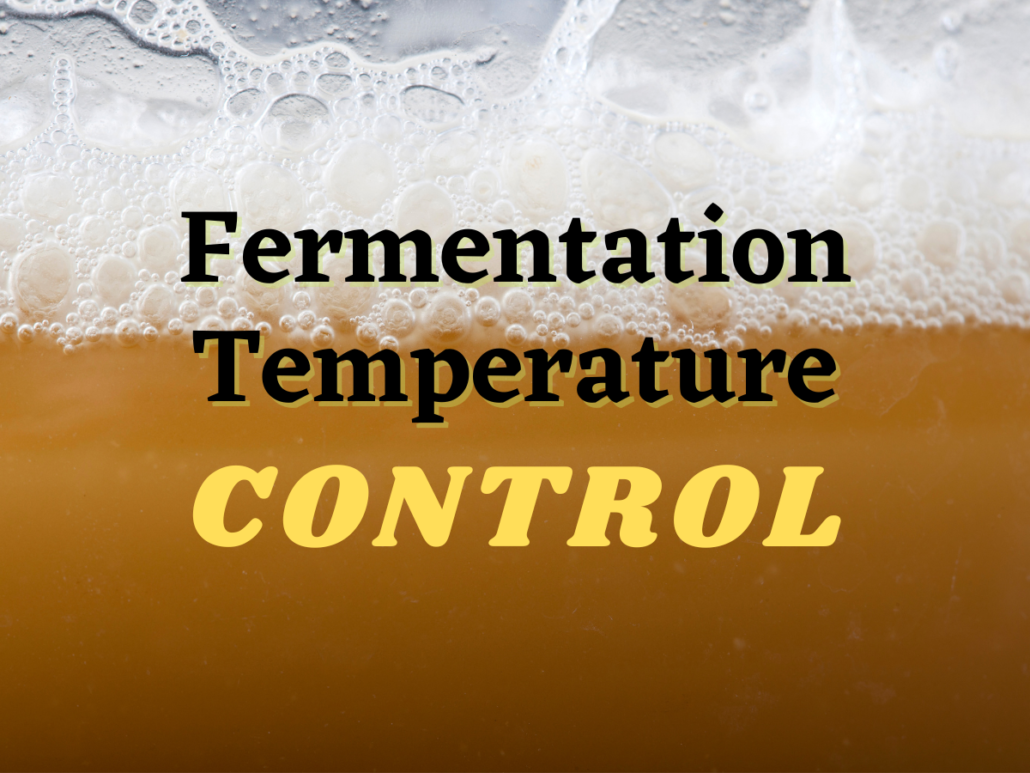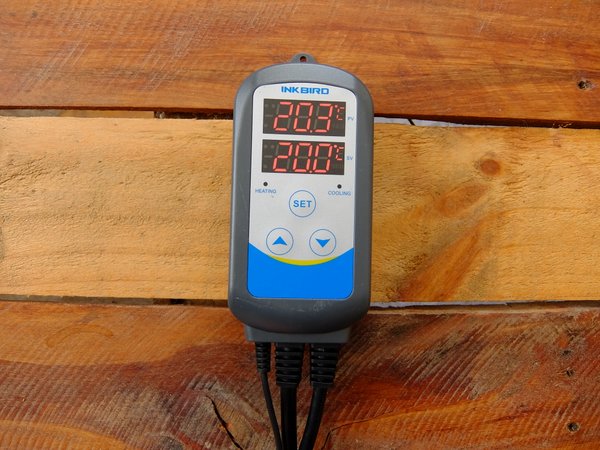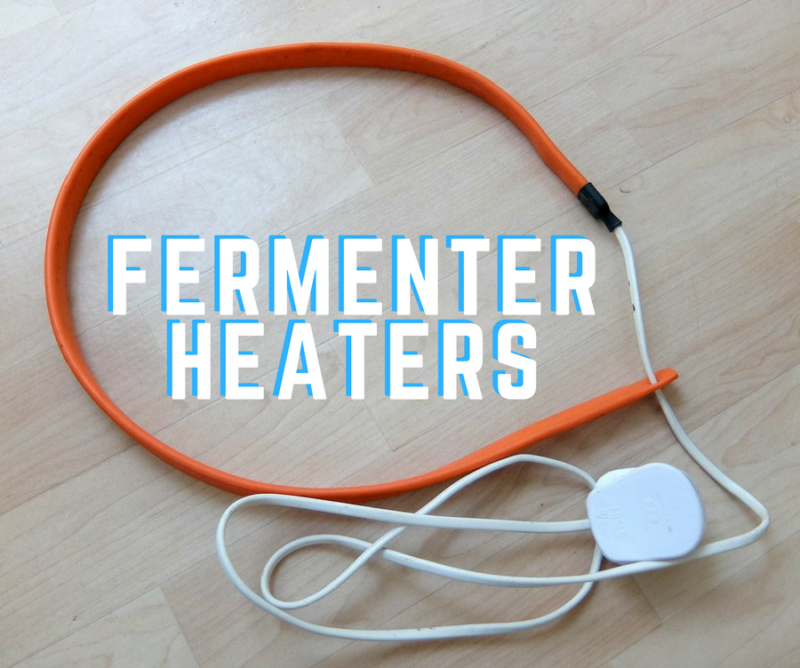Fermentation Temperature – How To Control Temperature & Why It’s Important

It doesn’t matter whether you are fermenting beer, wine, mead (or even vegetables), fermentation temperature control is one of the most important variables to getting the best quality in the finished brew.
Fermentation temperature and yeast management are possibly the most important aspects of brewing good beer or wine with fermentation temperature being of utmost importance.
If the fermentation temperature is too cold then the yeast goes dormant and won’t complete the fermentation. On the other hand, if the fermentation temperature is too hot the yeast will become stressed, creating all sorts of byproducts that cause off flavours and fusel alcohols that taste like solvents.
Way too hot and the cell walls of the yeast become permeable and alcohol which is toxic to yeast will kill the yeast.
Table of Contents
Typical Fermentation Temperature Ranges
Depending on what you are brewing and the particular yeast strain that is in use will dictate the ideal fermentation temperature range. Typically you will be looking at the following temperatures:
Ale: 60–75°F (16–24°C)
Lager: 45–55°F (7–13°C)
Wine: 60–80°F (16–27°C)
Important Points For Fermentation Temperature
One of the things we need to think about is the pitching temperature. This is the temperature of the wort or must when you come to pitch the yeast.
Depending on the strain of yeast you are using this can vary in range but it is important that the temperature is not too high.
It can be tempting to pitch yeast as soon as possible but if the wort is not cool enough and still cooling the yeast will produce a compound called diacetyl. Diacetyl is produced during all fermentations but is reabsorbed after primary fermentation during the conditioning phase. If too much diacetyl is produced by warm temperatures during the start of fermentation then the yeast will have a hard time removing it later on leaving your beer or wine with a buttery flavour and mouthfeel.
Primary Phase Temperature
After pitching yeast there is a lag phase where the yeast reproduces to sufficient levels. Then comes the most active phase of fermentation where the yeast is producing large amounts of CO2 and converting sugars to alcohol.
All this activity produces heat. Fermentation is an exothermic reaction and the temperature in the fermenter can be as much as 10F higher than ambient temperatures.
You need to be aware that even though the ambient temperature may be within the ideal temperature range for the yeast, the temperature within the fermenter may be slightly higher.
Cold Temperatures
Fermentations that are too cold can also be problematic.
It is widely held that fermentations on the cooler side of the ideal range for a particular yeast strain will produce more clean, neutral flavours with fewer esters.
If the fermentation temperature is too low yeast will behave sluggishly, even starting to shut down completely.
Colder temperatures also encourage flocculation which means the yeast may settle out of suspension before they have finished a complete fermentation.
Cooling Too Soon
It is particularly common when brewing lager and ales to crash the beer after fermentation. The timing of this step is important if you lower the temperature of fermentation to soon the yeast may not have enough time to reabsorb byproducts from the initial fermentation.
A diacetyl rest is used when fermenting lager where the temperature of fermentation is raised in order to allow the lager yeast to clean up diacetyl which would otherwise give off a butter taste and mouthfeel.
Controlling Fermentation Temperature
We know that we need to keep fermentation temperature within a set range according to what we are making, ale, larger or wine.
The best way of controlling fermentation temperature will be dictated by ambient temperatures and whether we need to heat or cool the fermenter in order to stay within the ideal temperature range.
Cooling Fermentation
The most common need, particularly if fermenting an ale or wine in a centrally heated house is to keep things cool.
Cool Area / Fermentation Chamber
The simplest way to do this is to keep the fermenter in a cool cupboard that isn’t directly heated. What we do need to be aware of though is we maintain a consistent temperature throughout a 24-hour period. Swings of temperature from warm to cool will stress the yeast.
Water Bath
Another way to control fermentation temperature is to immerse the fermenter in a water bath. A builders trub is a cheap container for a water bath. The extra mass of the water bath takes longer to heat and cool which prevents temperature swings throughout the day and night.
You can also add ice to the water bath which will keep the temperature of the fermenter lower than ambient temperatures.
Temperature Controlled Refrigerator
If you have more funds and space available the most precise and efficient option is to convert an unused fridge into a temperature-controlled fermentation chamber.

If you have a fridge large enough for your fermenter then a temperature controller can be used to control the internal temperature of the refrigerator.
A temperature controller such as this one can be set to cycle the power on and off for the refrigerator according to the temperature you set.
The added benefit of an automatic temperature controller attached to the fridge is you can also add a heating device inside the refrigerator to have even more control and accuracy of the fermentation temperature.
Heating Fermentation Temperatures
If you require warmer temperatures for your fermentation, such as fermenting in an unheated garage then you will need a device to heat the fermenter.
Heating Belts

Heating belts, which are adjustable bands that plug into the mains to produce heat can be slipped around the outside of the fermenter.
These heat belts produce a set amount of heat which can only determine how much the fermenter is heated by how high or low it is placed on the fermenting vessel. The lower the position the more the belt will heat the vessel, the higher it’s placed a smaller amount of heat will transfer through to the fermenter.
There is very limited control with a heat belt unless you use a dedicated temperature controller with the belt plugged into this. In this method you get much greater control.
Heating Mats or Pads
Heating mats or pads are devices you place the fermenter on which then transfer heat into the fermenter.
Heatings mats work in a very similar fashion as heating belts. Most don’t have built in thermostats or controls so again there is not much precision in their use unless you use a seperate temperature controller.
Temperature Controlled Refrigerator
Again, the most efficient method of controlling your fermentation temperature is a refrigerator. Of course, using a refrigerator to warm a fermentation doesn’t make sense.
In the case of heating a fermenter we need to place a heat source in the fridge connected to a temperature controller. Heat sources could be a storage heater, lightbulb or even a heat mat. The refrigerator acts simply as a insulated box which keeps the heat in.
The added benefit of a refrigerator fermentation chamber is you can easily heat and cool at various points of fermentation and then cold crash the fermenter when you want to get the brew ready for packaging.




Using a fridge for the heating process is a great tip, never really thought about that before. If you have a big enough cooler that may also work